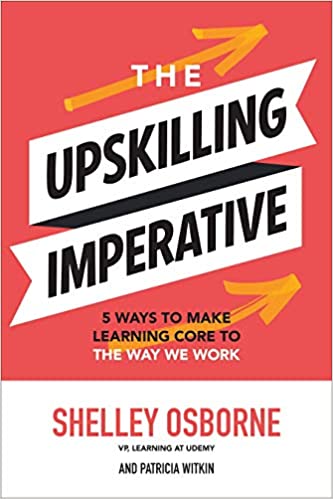Note: today’s post is geared towards volunteer leaders at SHRM chapters, ATD groups, HR state councils, event planners, and other membership organizations and associations serving fthe HR/talent professional. If that’s not you, then feel free to:
- Share with your own local chapter and/or
- Go on your merry way and offer a kind word or compliment to the next three people you talk to. Enjoy!
If you are a president, certification director, or programs leader for a professional chapter, you have had a wild year. Live events are canceling or pushing off indefinitely, and for many local groups, even the thought of something virtual can feel like unprecedented territory.
 As a speaker, event host, and event producer, I know the feeling! :-) Today I’ll share some ideas about what has worked for me if you have a more “do it yourself” approach. I’ll also offer an option if you’d like me to help with your event (note: I’ve programmed or planned over 100 live events in the last 10 years and probably that many virtual or digital sessions this year alone).
As a speaker, event host, and event producer, I know the feeling! :-) Today I’ll share some ideas about what has worked for me if you have a more “do it yourself” approach. I’ll also offer an option if you’d like me to help with your event (note: I’ve programmed or planned over 100 live events in the last 10 years and probably that many virtual or digital sessions this year alone).
Bottom line: you got this! Let’s dive into some of the things that are changing.
The Do It Yourself Approach for Online HR Events
The biggest perceived hurdle when it comes to online events is the delivery. How do we get content that has traditionally been delivered on a stage to our audience? The answer is technology. 2020 will go down as the year that Zoom became a term that everyone over the age of five years old understands, but is Zoom right for your event?
Zoom can be used for smaller meetings, and you can pay for Zoom webinars (a better and more intuitive version of GoToWebinar and some of the other older solutions in that space), but today’s environment is driving attendees to want to be more engaged and participatory in events.
Livestreaming
Many events are now looking at livestreaming. You can easily livestream to a chapter Facebook page or a YouTube channel, for example, and you don’t have to pay extra if you have 10 viewers or 1,000 like you would with most webinar software. You also get the social aspect woven in: attendees can see who else is there, chat with each other, and more. I have found this to be very powerful for creating connections with the audience.
I use StreamYard for streaming and it has been very valuable as a tool. It’s inexpensive, and all of your sessions are archived after you finish broadcasting. You could even use Streamyard to host panel discussions if you prefer that style to a more traditional keynote. Note: the StreamYard link above will give you a $10 coupon if you sign up!
Virtual Event Platforms
Event apps like Whova are also becoming more important. A new event app just got millions of dollars in venture capital funding because it has seen the space explode in popularity recently. These types of apps allow event organizers to host virtual sessions, offer expo areas for sponsors, and allow attendees to register and engage with the other participants during the sessions. This is more expensive and may be better suited for a virtual conference rather than monthly or quarterly educational sessions. Note: the Whova link above will get you a $100 coupon if you sign up!
Archiving and Selling Your Content
If you want to archive the content and offer it for payment after the fact, an idea that is new to many HR chapters and may lead to long-term revenue for supporting chapter programming, community donations, and other needs, you need a system to hold the content after it’s been recorded.
Two of the leading players in that space are Thinkific and Podia. In about 10 minutes, you can add a recorded video, set up your pricing, and have a link available for people to purchase the recorded session. The best part? You don’t have to touch it again!
Plus, in Thinkific, you can even set the content so people can’t fast forward through it, then have the certification codes from HRCI/SHRM at the end of the session for attendees to submit for credits. I have had some people try to cheat and skip the content, and this prevents that from happening.
Rethinking Content for Virtual HR Events
A few things on content when it comes to virtual events:
- New research from Microsoft shows our attention span starts to dip at 40 minutes on a video call. If you can add a layer of interactivity, that can help to boost attention and interest.
- More engaging/dynamic conversations, such as panel discussions, can help to add a layer of excitement that could be harder to get with a single speaker.
- Individual speakers can get away with being a bit sluggish in person, but it becomes almost painful in a virtual setting. Find someone that conveys emotion, excitement, and passion with their words and body language.
Sponsors, Payments, and Speaking Fees
Sponsors: sponsors STILL want to get in front of your audience. They still want to support your programs. But they need to know that it’s worth the investment. Coming up with some creative packages and approaches for sponsors to drive interest and engagement is critical here. There are a few key things sponsors want:
- Leads and connections: they want to sell. Period.
- Thought leadership and exposure: they want to be seen as experts for your audience.
Finding new and creative ways to give them those things, as I have done with many of the events I’ve planned this year, can lead to great outcomes for your events and for the sponsors helping to make them happen.
Speakers: you should expect to pay many professional speakers for their appearance on a virtual session as well. I have personally done about 20 free events this year as a way to give back while the community is hurting, but I also speak as a way to feed my family. Virtual events still require a great delivery (maybe even a better delivery, based on what I shared above), amazing content, and a deep connection with your audience. For events I am participating in, I’m seeing about 30-40% of normal speaker fees being paid for keynotes right now.
Silver lining: you might get a speaker your chapter could never afford in person!
Pricing: on the pricing front, YES you can charge people for virtual events. The bigger/longer they are (conference, full day workshop) the more you can charge them. If it’s shorter, you may decide to offer some content for free or reduced prices.
And remember, if you’re recording all of the virtual events you are doing, you have the option of putting it up on a site like Podia and have the replay on sale indefinitely. Your audience can pay anywhere from $9 to $99 (or more) depending on the length, the number of credits, and the demand for the topic. I’ll repeat that: your audience will keep buying it as long as it continues to be relevant.
Most chapters only make money when they run a live event or host a membership drive, but this kind of ongoing revenue stream can be very valuable for smoothing out the feast or famine budgets of some chapters, allowing you to serve your community in better ways.
Getting Some Help for Your Virtual HR Events
If you have read this and you feel like your head may explode, don’t worry! I am working with a partner on several events across the United States from the planning to the content to the production and everything in between. If you’d like help with any of the following, just reach out:
- Planning compelling, relevant content for your virtual HR event
- Deciding how to get sponsors interested in your virtual event
- Making a profit on a virtual event that rivals your profit on an in-person event (with much less risk!)
Bottom line, the world is a different place, at least for the time being. I hope this helps you think through some of the nuances of virtual events and gives you some ideas on how to make yours amazing. Keep serving the HR community–they need you!



 As a speaker, event host, and event producer, I know the feeling! :-) Today I’ll share some ideas about what has worked for me if you have a more “do it yourself” approach. I’ll also offer an option if you’d like me to help with your event (note: I’ve programmed or planned over 100 live events in the last 10 years and probably that many virtual or digital sessions this year alone).
As a speaker, event host, and event producer, I know the feeling! :-) Today I’ll share some ideas about what has worked for me if you have a more “do it yourself” approach. I’ll also offer an option if you’d like me to help with your event (note: I’ve programmed or planned over 100 live events in the last 10 years and probably that many virtual or digital sessions this year alone).